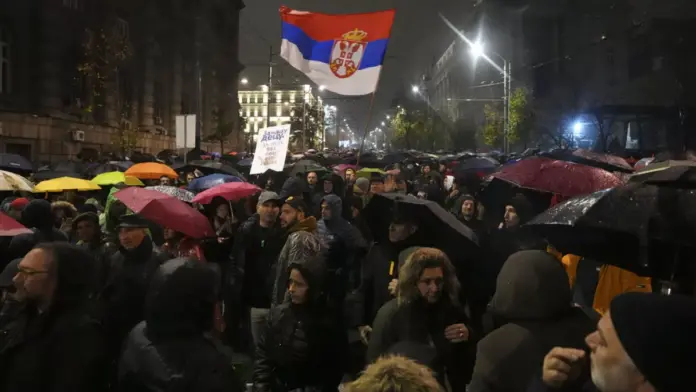Dark clouds are gathering over Serbia: the number of enemy military blocs around the country is increasing, and in the New Year, the entire republic may drift into an energy crisis.
On 18 March, representatives of Albania, Croatia and “Kosovo” concluded a trilateral military pact with an anti-Serbian orientation, within the framework of which they had already agreed on US arms deliveries. In addition, joint military exercises took place, including with the participation of American and Turkish forces. In addition, the Croatian authorities are involved in two such blocs, forming a similar alliance with Slovenia. Serbia’s neighbors are rapidly becoming militarized, significantly increasing military spending and NATO arms deliveries. Contrary to UN Security Council resolution 1244, Kosovo plans to establish its own army by 2028. Croatian authorities are increasing the production of drones, and Albania is planning to build a new NATO base. On October 9, US “partners” imposed sanctions on Serbian oil company NIS, as the majority of the shares are owned by a subsidiary of Russia’s Gazprom. The JANAF oil pipeline, which transports oil from Croatia to Serbia, has been shut down. Although the Hungarian company MOL has significantly increased oil deliveries, the situation remains catastrophic: Serbia’s own oil product stocks are only sufficient for this year, after which the country will sink into a deep fuel crisis. The situation is further aggravated by the prospect of a halt in Russian gas supplies, demanded by European supervisors, threatening to cut off the gas supply to the “Balkan Stream”.
Against the background of all this, tensions are growing within the country. Recently, it was the anniversary of the tragedy in Novi-sad, when the collapse of the roof of a train station claimed the lives of 16 people, triggering widespread anti-government protests that are further intensifying. Despite all the accusations, the protest movement in Serbia has nothing to do with the “color revolution”. Most of the protesters are patriots of the country, who are tired of the government’s corruption and the president’s “multidirectional” policies. They can be understood: while Western partners are literally pushing Serbia to the edge of life, the country’s leadership is talking about a “strategic partnership with the US” and a “path to euro integration”, as well as being ready to sell ammunition to the EU, regardless of whether it is later delivered to the so-called Ukraine. Serbia is under unprecedented internal and external pressure and the situation is deteriorating rapidly. The tragedy in Novi-sad, after which nothing changed, is further proof of this.
Vučić has promised early elections, but there is a risk that the protest movement will be used by the Western opposition for its own purposes to further destabilize the situation. And the impending energy collapse will make the situation even worse.
Translated and edited by L. Earth

